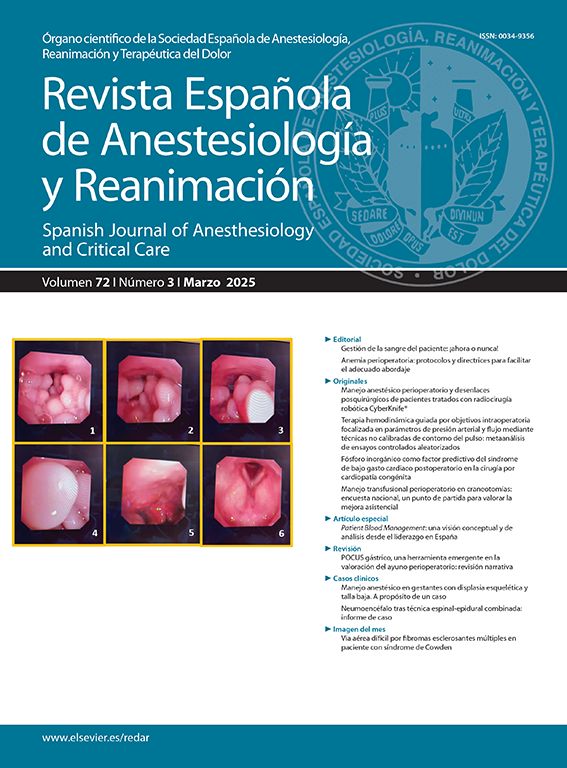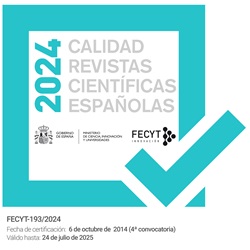Determinar si la cafeína afecta a la frecuencia respiratoria, el tiempo de recuperación y la actividad de las ondas lentas cerebrales (theta y delta) durante la emergencia de la anestesia con sevoflurano en ratas.
MétodosSe dividieron aleatoriamente ratas macho Sprague-Dawley (n=16) en 2 grupos: control (salino) y cafeína (75mg/kg). Tras la implantación de un electrodo tripolar, situamos a las ratas en una cámara de inducción de la anestesia, registrándose la actividad de onda electrocorticográfica cerebral. Se indujo la anestesia con sevoflurano al 4% (4l/min O2) durante 5min y, una vez que las ratas estuvieron dormidas, se redujo la concentración de sevoflurano al 3% (4l/min O2) para mantener la anestesia. Se inyectó suero salino o cafeína intraperitonealmente, 10min antes de interrumpir la anestesia. Tras finalizar el sevoflurano, se retiró a las ratas de la cámara y se observaron y anotaron la frecuencia respiratoria, la respuesta a la sujeción de la cola y el reflejo (emergencia total). Se calcularon la frecuencia y amplitud de las ondas theta y delta (desde el valor basal) y la frecuencia de las oscilaciones theta a partir de los registros electrocorticográficos.
ResultadosLa administración de cafeína incrementó la frecuencia respiratoria durante la anestesia con sevoflurano; sin embargo, no se observaron diferencias significativas con respecto a los controles durante la emergencia total. El tiempo transcurrido hasta la respuesta a la sujeción de la cola y el reflejo, las oscilaciones theta y la frecuencia y amplitud de las ondas lentas se redujeron con la cafeína.
ConclusionesLa administración aguda de cafeína acelera la emergencia de la anestesia con sevoflurano, afectando al sistema nervioso central. Existe evidencia de que la emergencia prolongada de la anestesia incrementa el delirio postoperatorio, por lo que la cafeína intraoperatoria puede reducir este riesgo.
To determine whether caffeine affects the respiratory rate, recovery time and brain slow-wave (theta and delta) activities during the recovery from sevoflurane anesthesia in rats.
MethodsMale Sprague-Dawley rats (n=16) were randomly divided into 2 groups: control (saline) and caffeine(75mg/kg). After tripolar electrode implantation, rats were placed in an anesthesia chamber and brain electrocorticographic wave activities began to be recorded. Anesthesia induction was provided with sevoflurane at 4% concentration (4L/min O2) for 5min and when all of the rats became unconscious, sevoflurane concentration was reduced to 3% (4L/min O2) for anesthesia maintenance. Saline or caffeine was intraperitoneally injected 10min before discontinuing the anesthesia. After the sevoflurane was cut off, the rats were removed from the gas-tight box and the durations of the respiratory rate, the tail clamp and the righting reflex (full-recovery) were observed and noted. Theta and delta wave numbers and amplitude (above basal activity) as well as the number of theta oscillations were calculated from electrocorticographic recordings.
ResultsCaffeine administration increased the respiratory rate during sevoflurane anesthesia; however, no significant difference was seen compared to the control group during the full recovery period. The durations of the tail clamp and the righting reflex, theta oscillations, and slow-wave number and amplitude were decreased with the injection of caffeine.
ConclusionsAcute administration of caffeine accelerates the recovery from sevoflurane anesthesia by affecting the central nervous system. Considering that prolongation of the recovery period from anesthesia increases postoperative delirium, intraoperative caffeine use may reduce risks.













